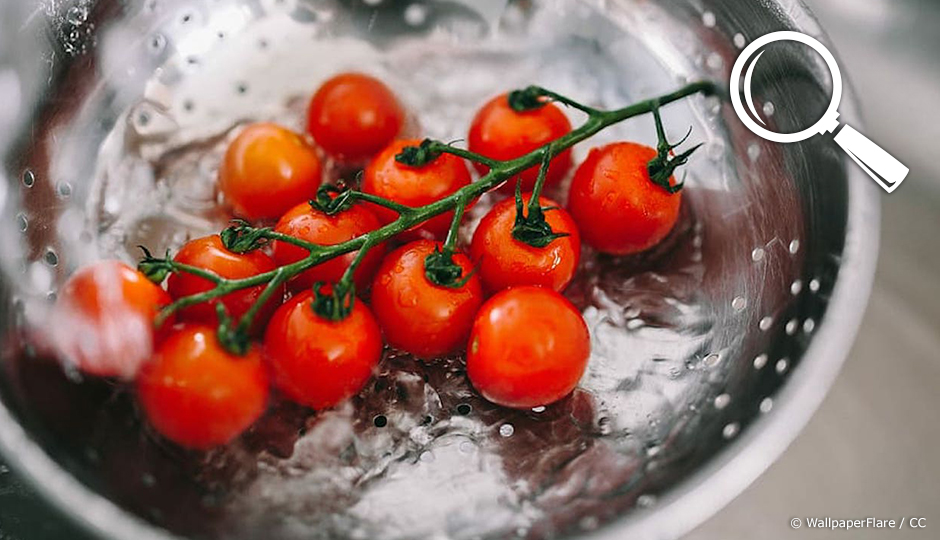Auteur : Agence Science Presse - Catherine Crépeau
Public health authorities recommend washing your hands in soap and water to reduce the risks of COVID-19. But scrubbing fruits and vegetables under running water seems to be enough. The Rumor Detector looked into the difference.
Before eating fruits and vegetables, always clean them first. This eliminates microorganisms, viruses, parasites, pesticides and dirt that could be deposited on the surface. Health Canada and Québec’s Ministère de l’Agriculture, des Pêcheries et de l’Alimentation (MAPAQ) both recommend washing produce under running water.
The most effective type of water
No studies exist on the different food washing levels and their potential for reducing viral infection by SARS-CoV-2. However, food pesticide studies show that commercial cleaning products and water mixed with dishwashing soap don’t work any better than plain water at removing most pesticides from the surface of fruits and vegetables. According to the same studies, soaking produce in a mixture of salt and water for a long time is the only way to get rid of some of the most resistant pesticides. Salt or vinegar solutions have also proved effective against various viruses and bacteria.
The same logic applies to the other pathogenic agents studied, says Cécile Tremblay, a full professor at the CHUM Research Centre in Montréal. Water won’t eliminate them completely. However, the digestive system doesn’t spread a virus like SARS-CoV-2. The virus doesn’t resist gastric enzymes, Ms. Tremblay explains.
The COVID-19 virus won’t withstand cooking
The COVID-19 virus also won’t withstand cooking. Cooking vegetables four minutes at medium heat, or 63°C, can reduce food contamination by a factor of 10,000, according to the French Agency for Food, Environmental and Occupational Health & Safety (ANSES). According to ANSES, washing raw vegetables in clear water is enough to reduce the risk of hand transmission. Then wipe fruits and vegetables with a single-use absorbent paper towel and you can eliminate potential residual viral particles.
Avoid disinfectants
Soap isn’t more effective than water at eliminating pesticides. Also, soap generally isn’t recommended because of the residues it can leave on food, MAPAQ microbiologist Josiane Garneau points out.
Avoid disinfectants or detergents like Javel water, which could poison you. Even when diluted, Javel water can generate potentially cancer-causing organochlorine compounds.
Is the virus’s lifecycle a criterion?
Every day, we learn more about the virus’s lifecycle outside the host. Recent studies found that the virus remained infectious after spending several days on inert surfaces. However, cardboard surfaces can be nearly as porous as fruits and vegetables. Half the viruses die every three-and-a-half hours on cardboard. This means that less than 10% remains after 12 hours, and less than 1% after 24 hours.
The virus’s ability to survive doesn’t reflect the possibility of contamination by contact, according to a study published in the April 2 edition of The Lancet. The risk of contamination doesn’t occur when you touch a contaminated surface with your hands, but when you then bring your hands to your face. That’s why frequent hand washing is important.
Verdict
It’s enough to wash fruits and vegetables in running water for 30 seconds. There are two key solutions: avoid touching your face with your hands and wash your hands in soap and water after contact with objects that could be contaminated.





